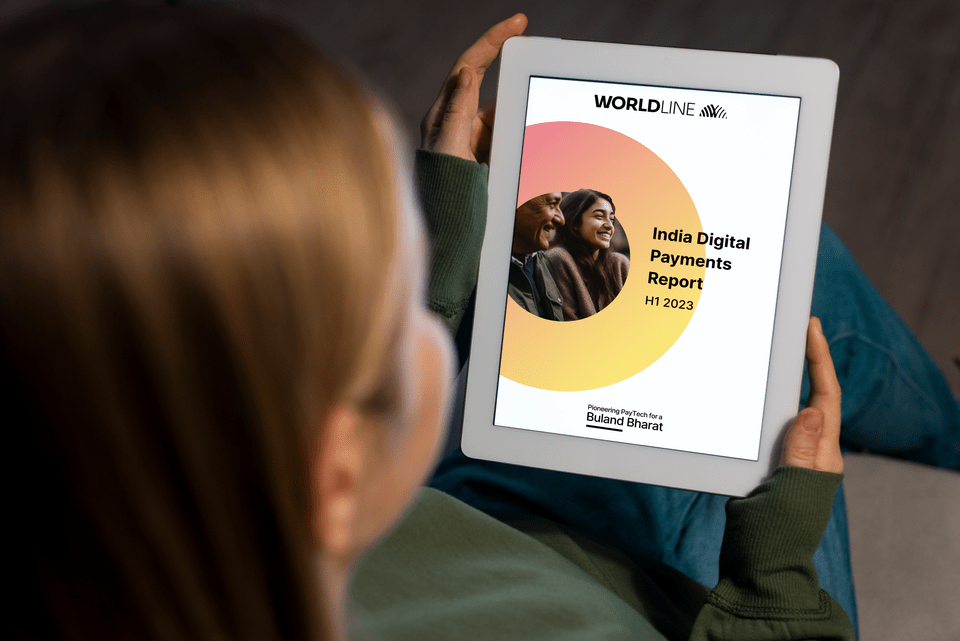Analysis – Worldline India Digital Payments Report 2021 (annual)
22 / 03 / 2022
The Worldline India Digital Payments Report (annual) underscores the latest trends shaping the growth of digital payments in India with undoubtedly cascading impact.

The RBI's Vision Document 2019-2021 marks a decisive break from the past, manifesting an intent to empower Indian consumers with an array of affordable, accessible, and highly secured e-payment options. Consequently, in the wake of a global pandemic that severely restricted physical transactions and buoyed by affirmative regulatory posturing, digital payments in India proliferated at velocity and scale. The Government's vision of building a less-cash landscape that is both compliant and convenient has been embraced enthusiastically by the public and private stakeholders alike, making multidimensional digital payment solutions available for Indian citizens like never before.
While the future indeed looks promising, what opportunities does it hold for those touched by the fast gravitation of the Indian economy towards cashless payment modes? We searched for answers by analyzing data available in the public domain and pulled from our 1.5+ million merchant touchpoints across 5000 locations within and beyond the Indian borders by in 2021 (Jan – Dec).
The Worldline India Digital Payments Report (annual) underscores the latest trends shaping the growth of digital payments in India with undoubtedly cascading impact.
In 2021, combined digital payments volume and value through cards, PPI and UPI inflated 50% and 46% respectively over 2020, demonstrating an inclination towards digital methodologies. Know the reasons steering this behavioural shift
Artificial Intelligence Driving Digital Payments
We look towards a future where AI applications in payments will soon make independent choices on behalf of the consumer. While this is already happening at a small scale with IoT devices, we predict a surge in truly autonomous payments at the intersection of unprecedented AI capabilities, blockchain mainstreaming, escalating IoT device density, and growing consumer propensities to pay digitally
Download the Worldline India Digital Payments Report 2021 (annual) to understand:
- The nuances of an autonomous payment revolution
- The different modalities involved in autonomous payment operations
- How can a business thrive using autonomous payments to its advantage?
“There are obvious preconditions that need to be met for autonomous transactions to materialize. Nevertheless, AI is set to grow at scale, disrupting payments in positive ways.” - Sunil Rongala, SVP - Strategy, Innovation & Analytics, Worldline
POS Terminals: Simplifying Digital Payments On The Ground
Payments Infrastructure Development Fund, an RBI initiative, has brought significant tailwinds for digital payments in India through POS terminals. 2021 witnessed an explosion in system installation, inflating the POS terminal base by 16% across India. Irrespective of whether you are a merchant that has already embraced POS-driven payments or planning to be one shortly, our Annual Digital Payments Report 2021 have much in store for you, including:
- Information on the top acquiring banks and those with the largest market share
- The types of businesses that are predominantly adopting POS-based digital payments in India
- States and cities where POS payments have been highly competitive in 2021 for Worldline.
Mobile Vs Internet-Based Payments
In 2021, mobile and internet-based payments exhibited a massive uptick in volume and value over the previous year. However, a closer exhibition reveals that while mobile-based payments have an absolute upper hand in transaction volume, with a record growth of 106%, internet-based payment methods are more trusted in the country for high-value transfers. Drill deeper into various other aspects of each mode with the Worldline India Digital Payments Report (annual). Which one is your organization leveraging primarily at the moment?
UPI: Reaching New Heights
2021 has been a remarkable year for India’s most prominent fintech innovation, UPI. During the year, the system clocked 4.57+ billion transactions in volume and breached ₹ 8.2 trillion in value, registering more than 100% growth in both fronts over 2020. With NPCI raising the UPI-based transaction ceilings to ₹ 5 lakh for Retail Direct Scheme and UPI-based ASBA IPO, the Government’s intentions of building further on the success of the technology are clear.
The prospect that such a move entails has inspired several ecosystem participants into action. 2021 alone witnessed 75 banks plugging into the UPI stack, giving a fillip to the growth of digital payments in India. How is your organization gearing up for a UPI-enabled future?
Democratizing Digital Payments in India
Alongside UPI, Aadhar Enabled Payment Service or AePS have brought digital payments in India closest to the grassroots. With 2021 manifesting at least 20% growth in volume and value, NPCI has adopted a slew of measures and Best Practices to make AePS transactions widely accessible, highly available, and incredibly safe. Know in detail about such measures, what makes AePS an ideal conduit for Direct Benefit Transfer, and how it adds up to the future of digital payments in India in our Annual Digital Payments Report 2021.
Alongside these major trends, also read in detail about the state of Digital Payments in India using Credit and Debit cards, Prepaid Payment Instruments, Mobile Wallets, IMPS, NETC, and Bharat BillPay; all within the covers of Worldline India Digital Payments Report 2021 (annual)







